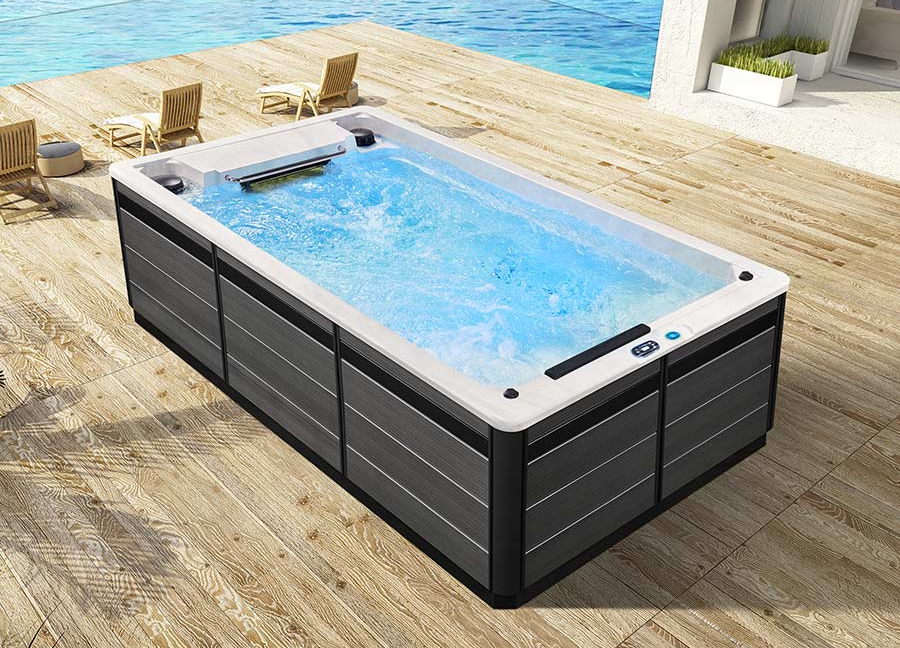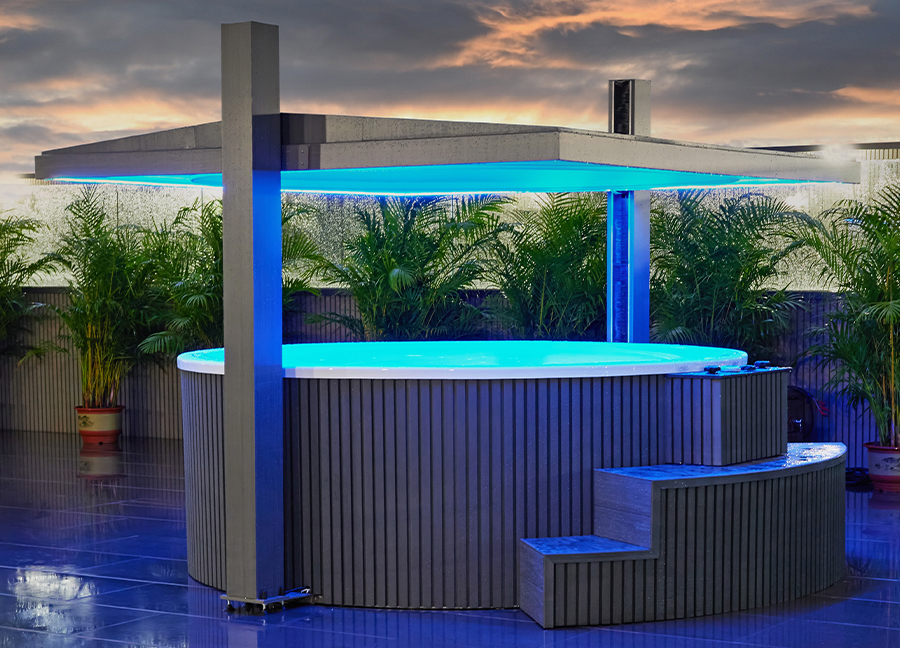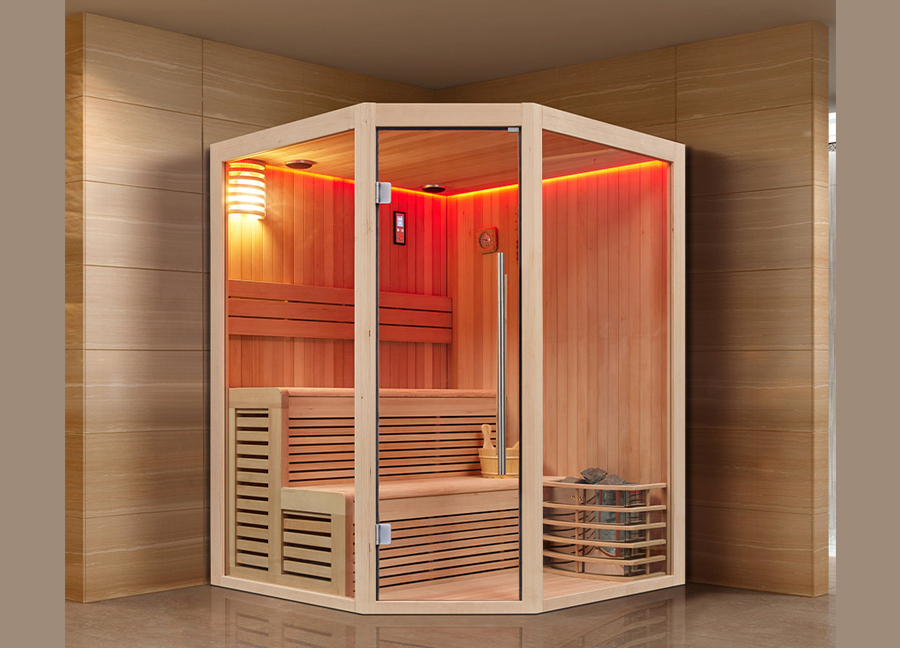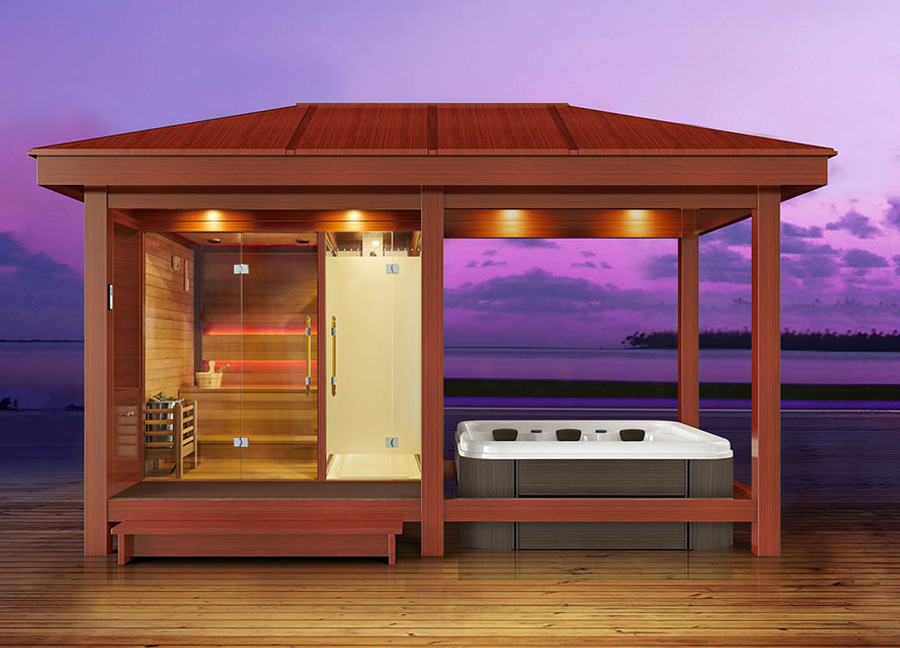The hydromassage bathtub, which combines hot water, jet water, bubbles and pulse technologies, has become a popular choice for home health therapy and relaxation. Many users pay attention to equipment cleaning, pipeline maintenance, function adjustment and other aspects during use, but often lack a systematic understanding of a basic and key issue-"How often should the water in the hydromassage bathtub be changed?"
Although water seems to be still and transparent, it constantly undergoes chemical and biological changes with the human body, air, equipment pipelines and cleaning agents during frequent use. Timely water replacement is the basis for ensuring the hygienic, safe and comfortable operation of the hydromassage bathtub.
This article will systematically and in-depth analyze this issue from the perspectives of the causes of water pollution, the determinants of the water change cycle, water quality risks, recommended frequency, maintenance methods, etc., to help users establish scientific water change and maintenance habits.

Why does the water quality of the hydromassage bathtub need to be changed regularly?
Compared with ordinary bathtubs, the internal structure of the hydromassage bathtub is more complex: it has functional components such as heating system, circulation pump, bubble jet pipeline, and water flow nozzle. This makes the water not only stay on the surface of the bathtub, but also flow through the inside of the equipment and be reused repeatedly.
This "closed + circulation + high temperature" usage characteristics determine that the water quality of the hydromassage bathtub is easily polluted by the following factors:
1. Human secretions and attachments
· When the user of the hydromassage jacuzzi tub takes a bath, sweat, sebum, keratin, saliva, urea and other organic matter will be released;
· Body lotion, cosmetics, sunscreen, etc. on the skin will also enter the water;
· When multiple people bathe together, this pollution will be superimposed.
2. Bacteria and microbial growth
· The water temperature of the hydromassage jacuzzi tub is often maintained at 35°C~40°C, which is very suitable for the reproduction of bacteria, fungi and microalgae;
· If it is not replaced or disinfected in time, the biofilm will adhere to the pipe, affecting the operation of the hydromassage jacuzzi tub and producing odor.
3. Cleaning agent residue and water quality deterioration
· If the agent used to clean the pipes is not thoroughly rinsed, it will react with organic matter in the water;
· Mineral deposits (calcium and magnesium ions) in the water will form scale, affecting the heating efficiency of the hydromassage jacuzzi tub.
Therefore, even if it looks like "the water is still clear", it may actually contain a large number of pollutants that are invisible to the naked eye. This is why the water in the hydromassage bathtub must be changed regularly.
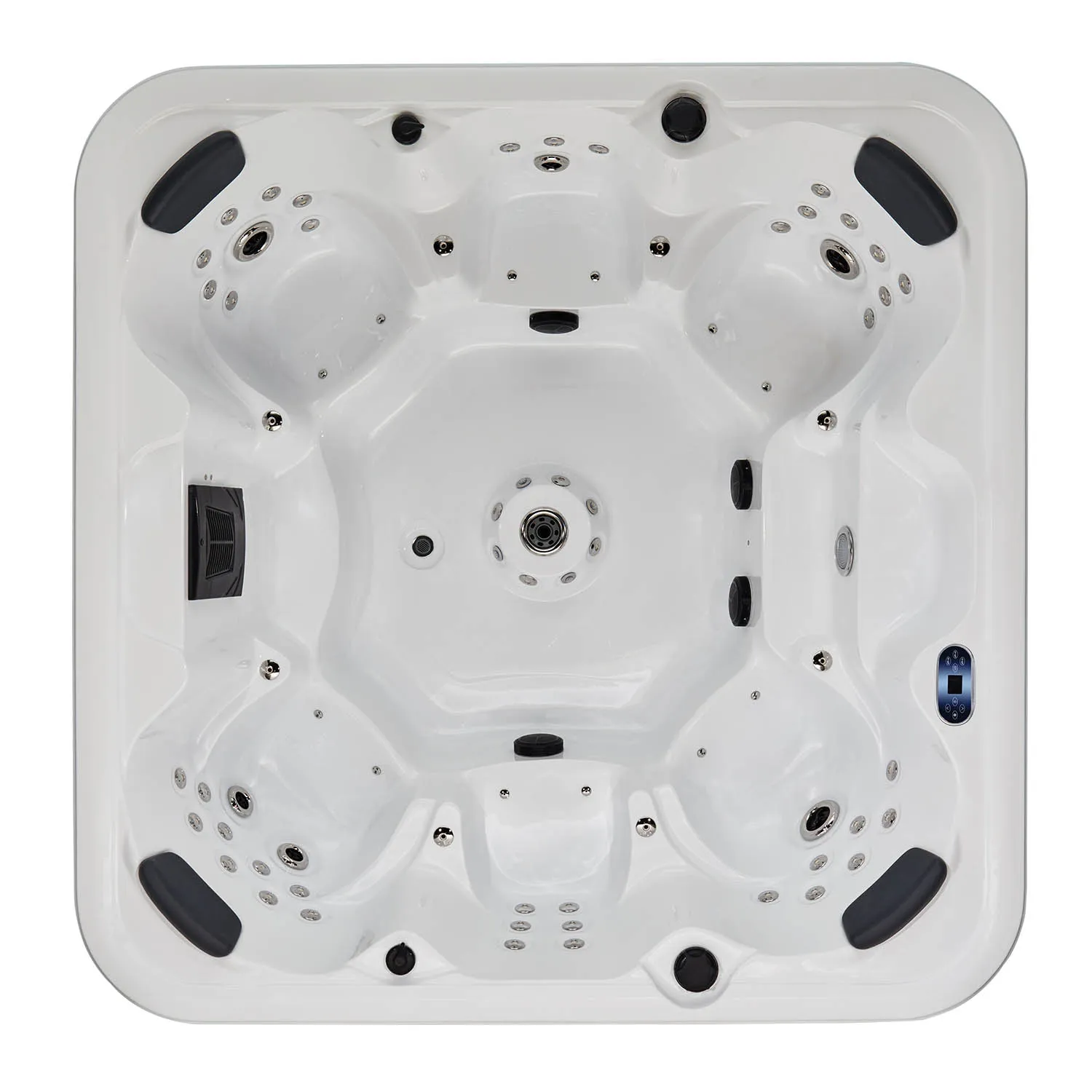
How often should I change the water in the hydromassage bathtub?
There is no fixed standard for the water change cycle, but it should be flexibly determined based on actual usage. The following are the main factors that determine the water change cycle of the hydromassage bathtub:
1. Frequency of use
· High frequency use (daily or every other day): It is recommended to change the water every 3~5 days;
· Medium frequency use (2~3 times a week): It is recommended to change it every 7~10 days;
· Low frequency use (1~2 times a month): It is best to drain the water immediately after each use of the hydromassage jacuzzi tub.
2. Number of users
· Single-person use: water pollution speed is relatively slow;
· Shared by multiple people: pollutants accumulate quickly, and the frequency of water changes should be accelerated;
· Families with children or the elderly: it is recommended to change water more frequently to ensure hygiene.
3. Bathtub volume and water circulation system performance
· Large bathtub (>500L): large water volume, high pollution dilution, can appropriately extend the cycle;
· Small bathtub or low circulation system efficiency: it is recommended to change water more frequently to keep the water clean.
4. Whether to add chemicals
· If essential oils, bath salts, and bath products are added, the water should be changed immediately after using the hydromassage jacuzzi tub;
· Residual chemicals may affect the stability of water quality and accelerate the growth of microorganisms.
5. Whether the bathtub has a purification system
Hydromassage bathtubs equipped with ultraviolet sterilizers, ozone generators, and filtration devices can appropriately extend the water change interval;
However, these devices cannot replace water changes, they only assist in delaying pollution.
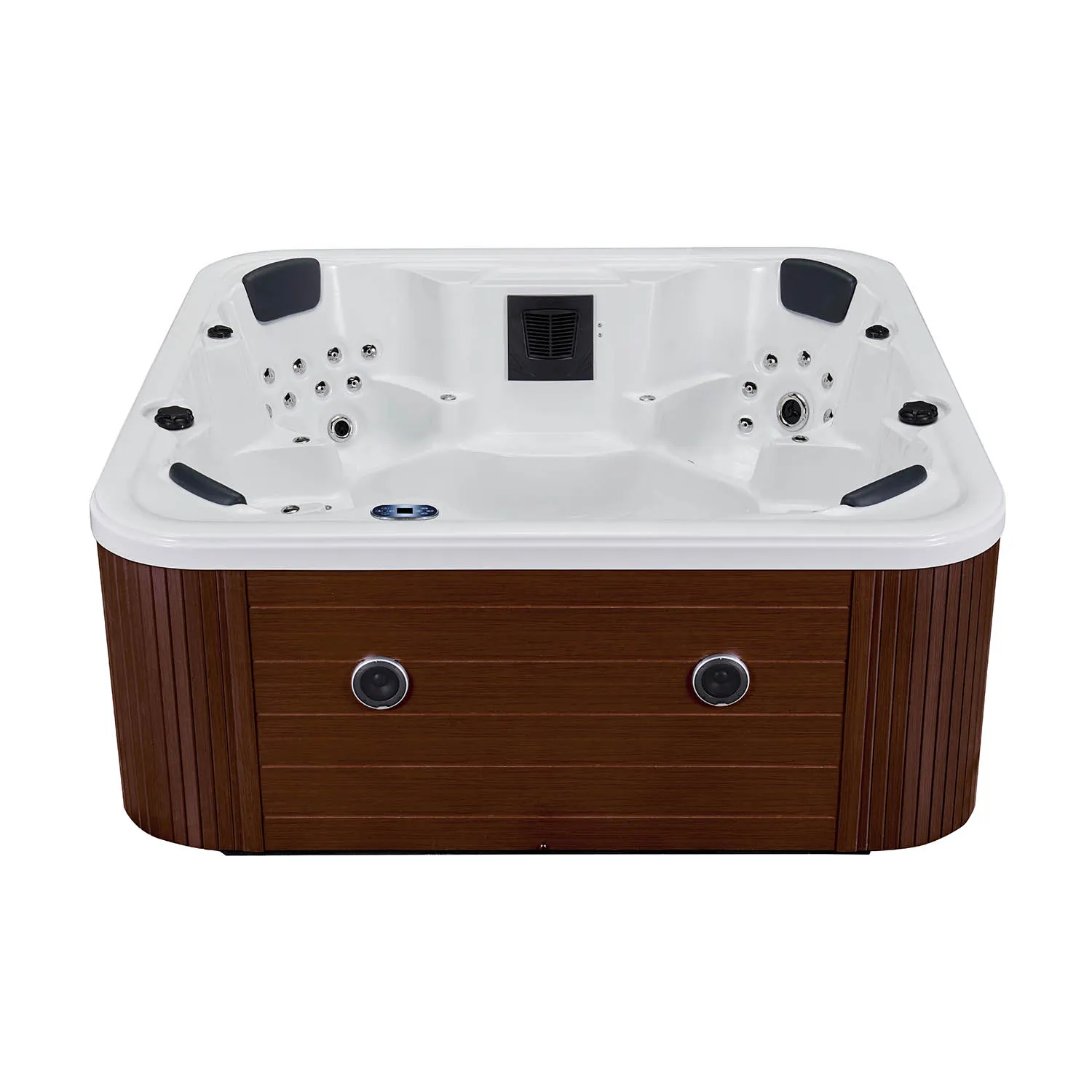
Hydromassage bathtub: Risks of not changing water or delaying water change
Many hydromassage jacuzzi tub users postpone changing water to save water or because "the water looks OK", but long-term use of the same pool water can cause many problems:
1. Health hazards
·Skin infection: bacteria and fungi may cause dermatitis, acne or genital discomfort;
·Respiratory tract irritation: volatile substances released by microorganisms in the water can cause throat irritation;
·Redness and swelling of the eyes: high concentrations of impurities and bacteria may cause conjunctival discomfort or pink eye.
2. Equipment damage
·Impurities in the water will accelerate the wear and blockage of the hydromassage jacuzzi tub pump, nozzle, and heater;
·Biofilm formation in the pipe reduces water flow efficiency;
·Long-term use without changing water is prone to "deposition of dead water".
3. Decreased user experience
·Water quality becomes turbid and has a peculiar smell;
·Water flow and spray have a sticky feeling;
·Surface bubbles or floating oil layer reduce the sense of relaxation
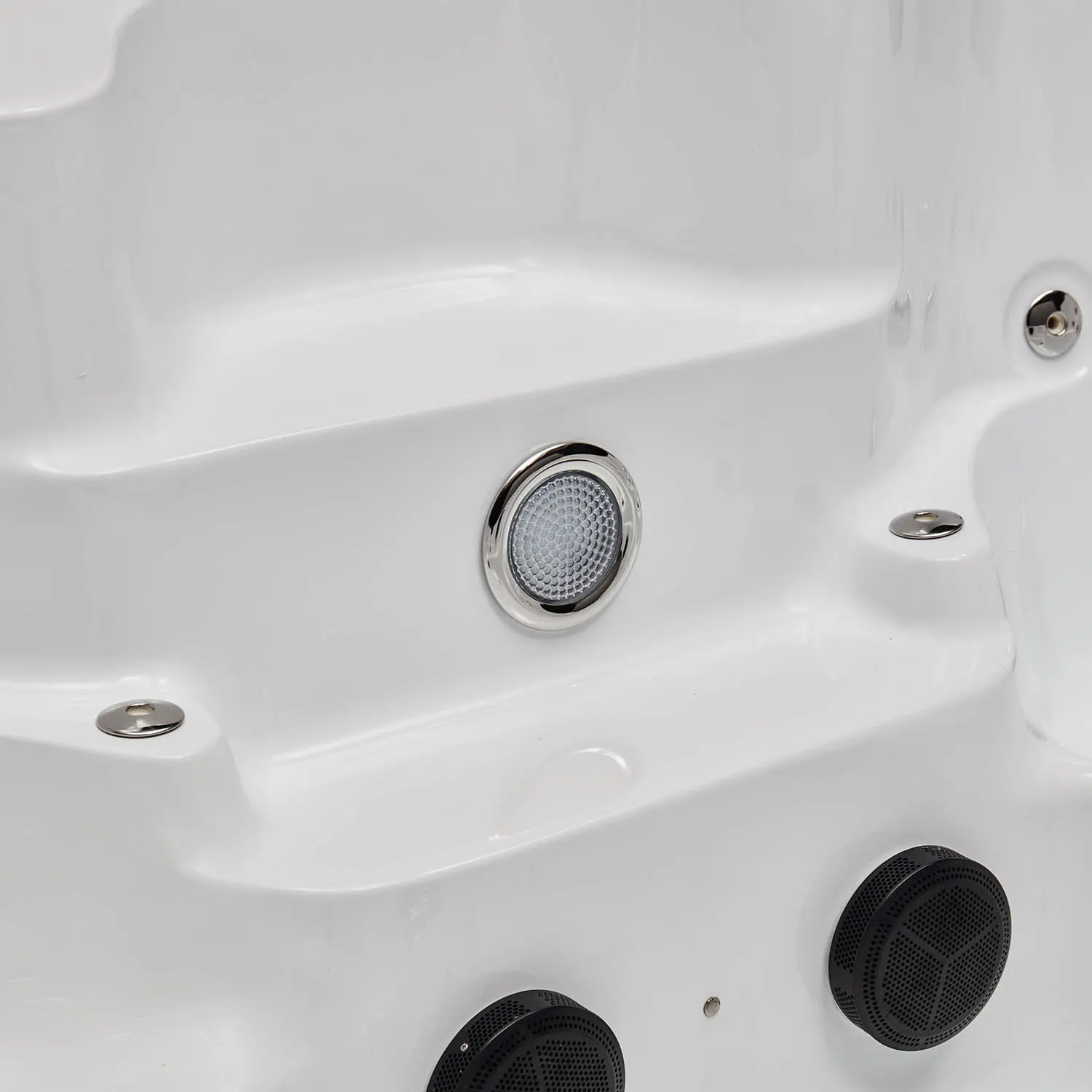
Hydromassage Bathtub Water Change Cycle Recommendation Table
Frequency of use of hydromassage bathtub | Number of users | Add fragrance/medicine? | Recommended water change cycle |
| Daily use | Single | No | Every 3~5 days |
| Daily use | Multiple | Yes | After each use |
| 2~3 times a week | Single | No | About every 7 days |
| 2~3 times a week | Multiple | Yes | After each use |
| 1~2 times a month | Single | No | Drain water immediately after use |
⚠️ Regardless of the frequency of use of the hydro massage bath tub, it is recommended to completely change the water at least every 2 weeks.
How to change the water in a hydromassage bathtub correctly?
Correct water change is not only about drainage, but also a complete process of cleaning and maintenance of the hydromassage bathtub system:
1. Drain the old water
· Turn off all functional systems;
· Drain the water completely through the bottom drain valve or the built-in drain pump;
· If the drainage is not smooth, you can manually disassemble the drainage pipe for inspection.
2. Flush the internal system
· Inject an appropriate amount of clean water into the hydromassage jacuzzi tub;
· Add spa pipe cleaning agent (Spa System Flush);
· Start the water pump/jet function for 10~15 minutes;
· Thoroughly flush the inside of the pipe and drain again.
3. Clean the tank and filter
· Scrub the inner wall of the hydromassage jacuzzi tub with a non-foaming detergent;
· Clean or replace the filter element;
· Check whether the nozzle and spray hole are unobstructed.
4. Refill water and debug functions
·Add clean water;
·Start the hydromassage jacuzzi tub to test whether the heating and water flow systems are normal.
Auxiliary maintenance suggestions for the use of hydromassage bathtub
In addition to regular water changes, the following details can also help extend the water cleaning time:
1. Rinse the body before use
Rinse off sweat, lotion, and cosmetics to reduce water pollution.
2. Avoid using bubble baths or shampoo products
These products contain surfactants, which are very easy to foam and pollute the system.
3. Disinfect regularly
Use professional spa disinfection tablets or ozone systems to disinfect water every month;
Check the effectiveness of ultraviolet lamps or filters regularly.
4. Control temperature and humidity
It is recommended to maintain the water temperature at 37°C~39°C, which is comfortable and can delay bacterial growth;
Open the cover or ventilate after use to prevent moisture from breeding bacteria.
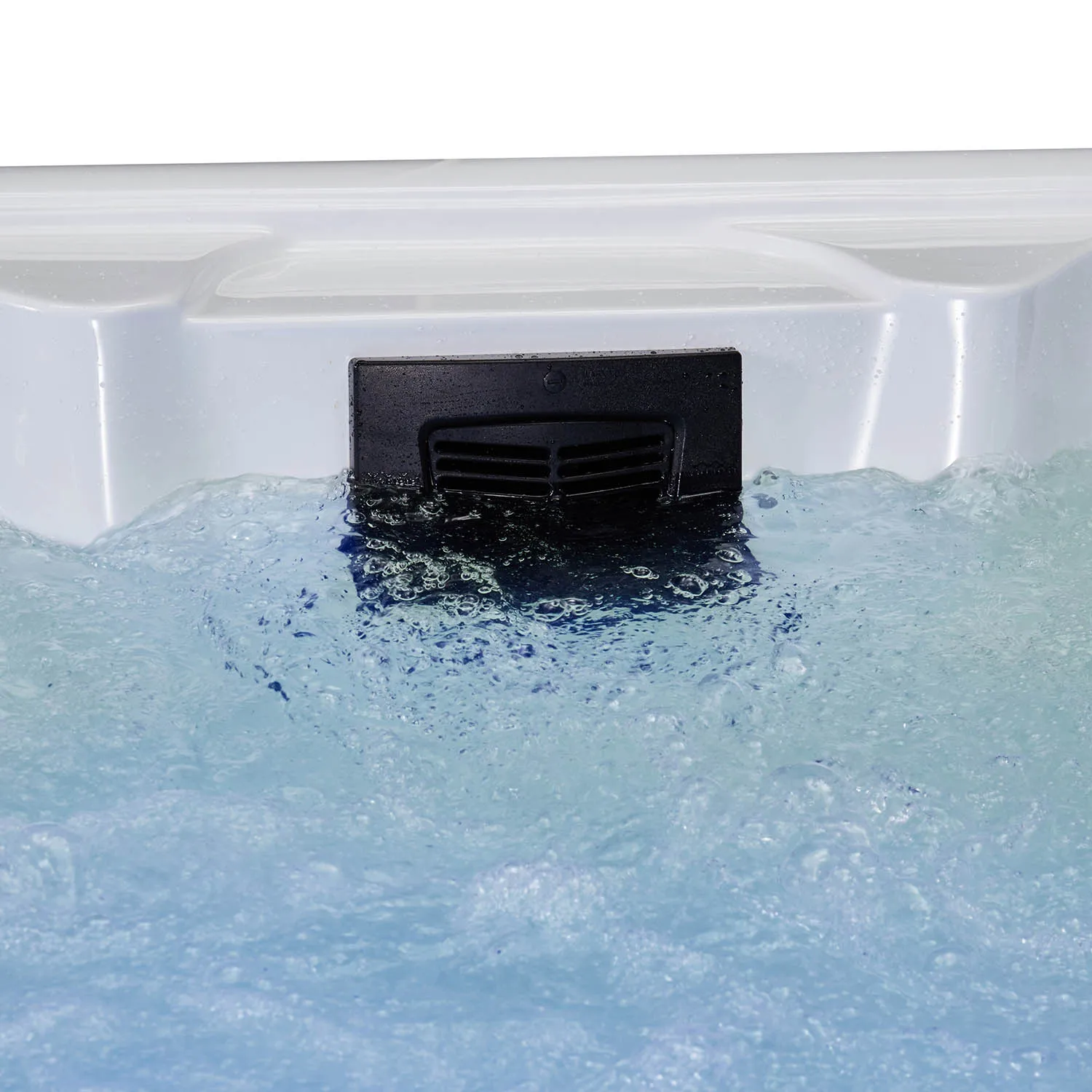
✅ Hydromassage Bathtub Water Change Guide Summary Table
| Category | Content classification | Specific description |
1. Why do we need to change water? | Sources of pollution | Sweat, sebum, cosmetics, detergent residues, etc |
| Microbial growth | High temperature circulation can easily lead to the growth of bacteria, fungi, and algae | |
| System pollution | Pipeline scale, biofilm, filter impurities | |
| Deterioration of water quality | Odor, turbidity, foaming, oil layer, foam accumulation | |
| 2. Water change frequency reference | Daily use (single person) | Change the water every 3-5 days |
| Daily use (multiple people) | Change the water after each use | |
| Use 2~3 times a week | Change the water every 7-10 days | |
| Use 1~2 times a month | Drain the water after each use | |
| Use bath products | Must change the water after each use | |
| 3. Risks of not changing water | Health issues | Skin diseases, conjunctivitis, respiratory irritation, infection risk |
| Device damage | Water pump blockage, nozzle scaling, reduced heating efficiency | |
| Degraded experience | Odor, foam, oil film, water discoloration | |
| 4. Water change operation process | Step 1 | Drain old water (drain after turning off the function) |
| Step 2 | Add water and use pipe cleaner to circulate and clean for 10-15 minutes | |
| Step 3 | Drain and scrub the tank, clean the filter | |
| Step 4 | Inject clean water and test the equipment operation | |
| 5. Suggestions for extending water quality cleaning | Rinse before use | Reduce the amount of body oil and cosmetics that enter the bathtub |
| No foam products allowed | Avoid products such as shampoo, shower gel, and bubble bath | |
| Control temperature and humidity | Keep the water temperature at 37-39°C, ventilate after use to avoid moisture | |
| Disinfect regularly | Clean the pipe every 2 weeks, disinfect monthly, and replace the filter regularly | |
| 6. Minimum water change frequency recommendation | Regardless of frequency of use | Completely replace the bathtub water at least every two weeks |
What Are the Key Features That Ensure High Quality in MEXDA Products?
Our commitment to high-quality products begins with materials. We use durable acrylic shells, energy-efficient PU insulation, corrosion-resistant plumbing systems, and international branded pumps and heaters. Every unit is tested before shipment—leak tests, electrical safety checks, and component inspections are standard.
Our manufacturing process strictly follows ISO9001:2015 protocols. With robot arms for fiberglass spray, CNC shaping for structure precision, and full QC at every step, we deliver spa and sauna systems you can trust.

